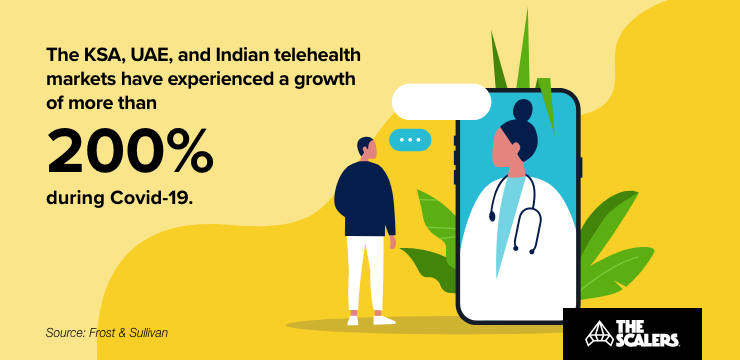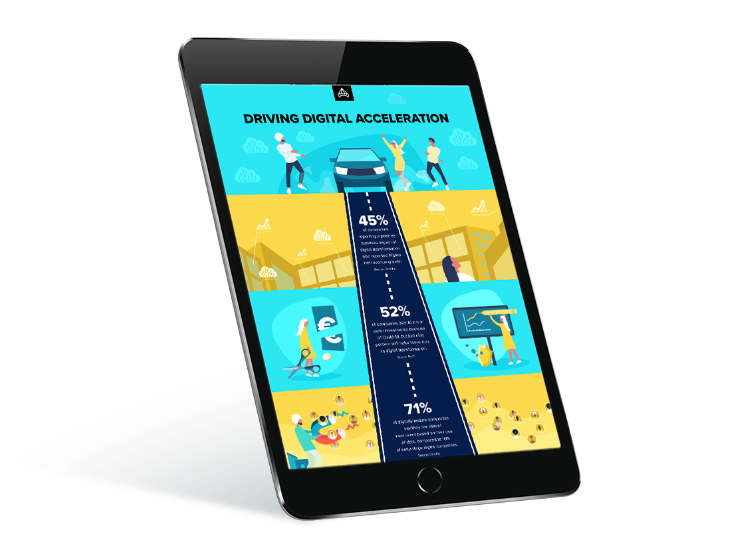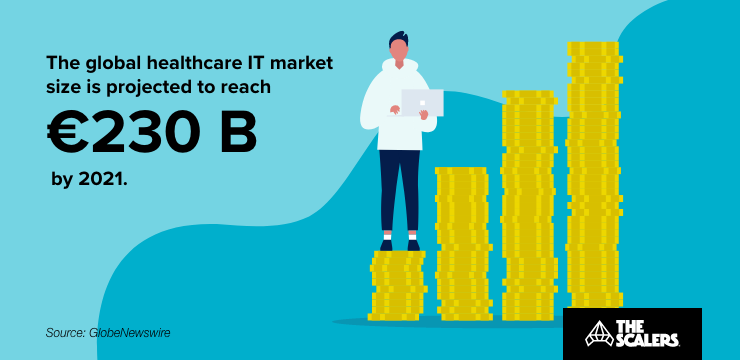The Covid-19 pandemic has presented a humanitarian crisis like never before, with over 38 million people infected by the virus, and more than 1 million lives lost. There’s no doubt that the coronavirus has exposed the vulnerability of the human ecosystem and our helplessness before an invisible threat.
On the other hand, the healthcare industry is striving to ramp up the production capacity of essential equipment and protective gear, design better mission-critical devices, and administer care to thousands of people worldwide.
Though many MedTech companies have quickly risen to the challenge, the global healthcare industry will need to embrace digital health solutions to tide over this crisis and beyond.
Embracing the new normal
It was recently discovered that pre-Covid, roughly 13,000 people in the US, received telemedicine once a week. However, by April 2020, this number had increased to nearly 1.7 million. In fact, over 9 million people have received a telehealth service between March and June.
As healthcare workers and patients get used to the concept of telemedicine, virtual care will penetrate deeper into healthcare services. Real-time, face-to-face encounters between doctors and patients through digital devices, have now become the new norm.


Even critical care physicians are now embracing the tele-ICU model, where an off-site critical care command centre is connected with patients in ICUs through real-time audio, visual, and electronic means to exchange health information.
And, with digital health solutions and contactless experiences becoming the new mantra, telehealth companies like Teladoc and HealthHero have seen an aggressive demand for their platform offerings. Even non-traditional IT players such as Zoom and Microsoft are keen on exploring virtual healthcare.
Can telehealth replace in-person care?
In the opinion of many, telehealth does have its limits. For instance, in rural areas, poor internet connectivity and bandwidth coverage mean that patients have no choice but to visit physical healthcare facilities for care. Similarly, some segments of our population, such as the elderly, aren’t too keen on the concept of digital health solutions and virtual healthcare.

In reality, one of the biggest challenges for virtual healthcare delivery is seamless patient and caregiver experiences. To achieve this, large tech firms like Microsoft and Salesforce are making significant investments in CRM software and digital health solutions. This, in turn, will improve digital workflows, reduce the turnaround time, and increase the effectiveness of telehealth and virtual care management.

Can’t find the skills you need at home? Stop searching and start scaling
LEARN MOREA digital patient journey beyond Covid-19
One of the primary reasons for the shift to digital health solutions is qualitative treatment modules, flexibility, and improved patient care — which, in turn — contribute to cost savings in the long term.
What can you expect?
Usually, the first bump in the road is scheduling appointments. With many patients in full-time jobs, it isn’t always convenient to visit the doctor during office hours.
In fact, before the pandemic, the Benefis Health System in the US found that 50% of all patients preferred to book appointments after hours, even for urgent care. Post-Covid, we can expect this number to increase as more patients switch to patient scheduling platforms to book their appointments and virtual consultations.
Also, post-Covid, a huge influx of patients, will want to reschedule postponed visits. Providers can streamline the registration and scheduling process by allowing them to be completed online. This will not only save time, but will offer a more efficient patient experience.

Don’t get left behind in the shift to digital business
DOWNLOAD INFOGRAPHICThe future of digital healthcare
1. Faster product development cycles
Consumer businesses, including healthcare, are driven by the need for constant innovation. However, in 2018, only 29% of healthcare solution providers said their development and launch cycles for digital health solutions are less than 18 months.
Today, in a world touched by Covid, this number has increased to 44%. More and more healthcare providers are now realising the need to adopt greater agility and manage their product life cycles better — a huge step in the right direction.
2. Artificial Intelligence
AI is one of the most powerful accelerators of innovation in the world today, and it’s emergent capabilities in the healthcare industry haven’t gone unnoticed. In fact, the global AI healthcare market is predicted to grow from €4.1 billion in 2020 to over €38.5 billion by 2026 — a compound annual growth rate of almost 45%.

AI, in combination with Machine Learning, can help healthcare providers build highly personalised digital health solutions such as digital health monitoring platforms and precision medicine. Further, AI will help healthcare workers sift through mountains of data and gain new insights to identify potential risks, in turn, helping patients avoid the hospital.
3. Gamification
In a nutshell, gamification is the implementation of game design mechanics and techniques to non-game applications. The primary motive of gamification is to engage users and make their daily, mundane tasks more fun.
In digital health solutions, game mechanics are often used in health and wellness apps. Have you ever wondered why progress bars are used to measure energy levels and success during live workout classes? Or why fitness apps encourage you to share your weight loss journey with other users or on social media?

It’s to create a competitive feeling to ensure more use of their services. A virtual star, a badge, medals of accomplishments — they’re all gamification strategies to increase your motivation, in turn, generating profits for their business.

How we helped Preqin establish a 450+ person global R&D centre in India
DOWNLOAD CASE STUDYIn the near future, with wearables and the IoT gaining momentum like never before, MedTech companies will increasingly implement gamification strategies in their fitness applications and equipment.
Adopting these digital health solutions will be the most crucial step towards ensuring efficient healthcare in the post-pandemic world, enhancing patient experience, implementing smarter workflows, and improving clinical outcomes.
If you’re planning to take your business online and you’re looking for a stellar development team to back you up, feel free to reach out to us.
















